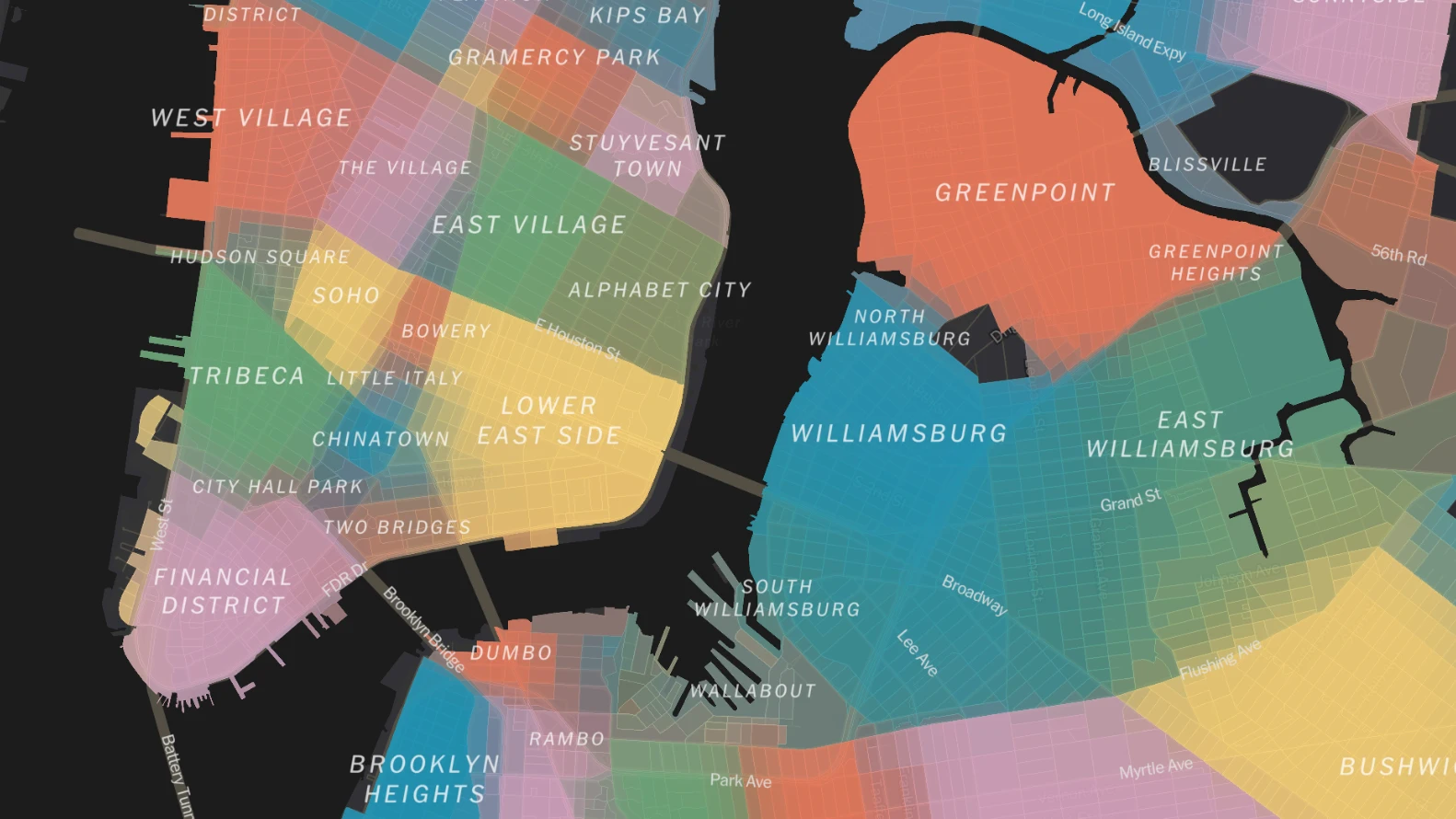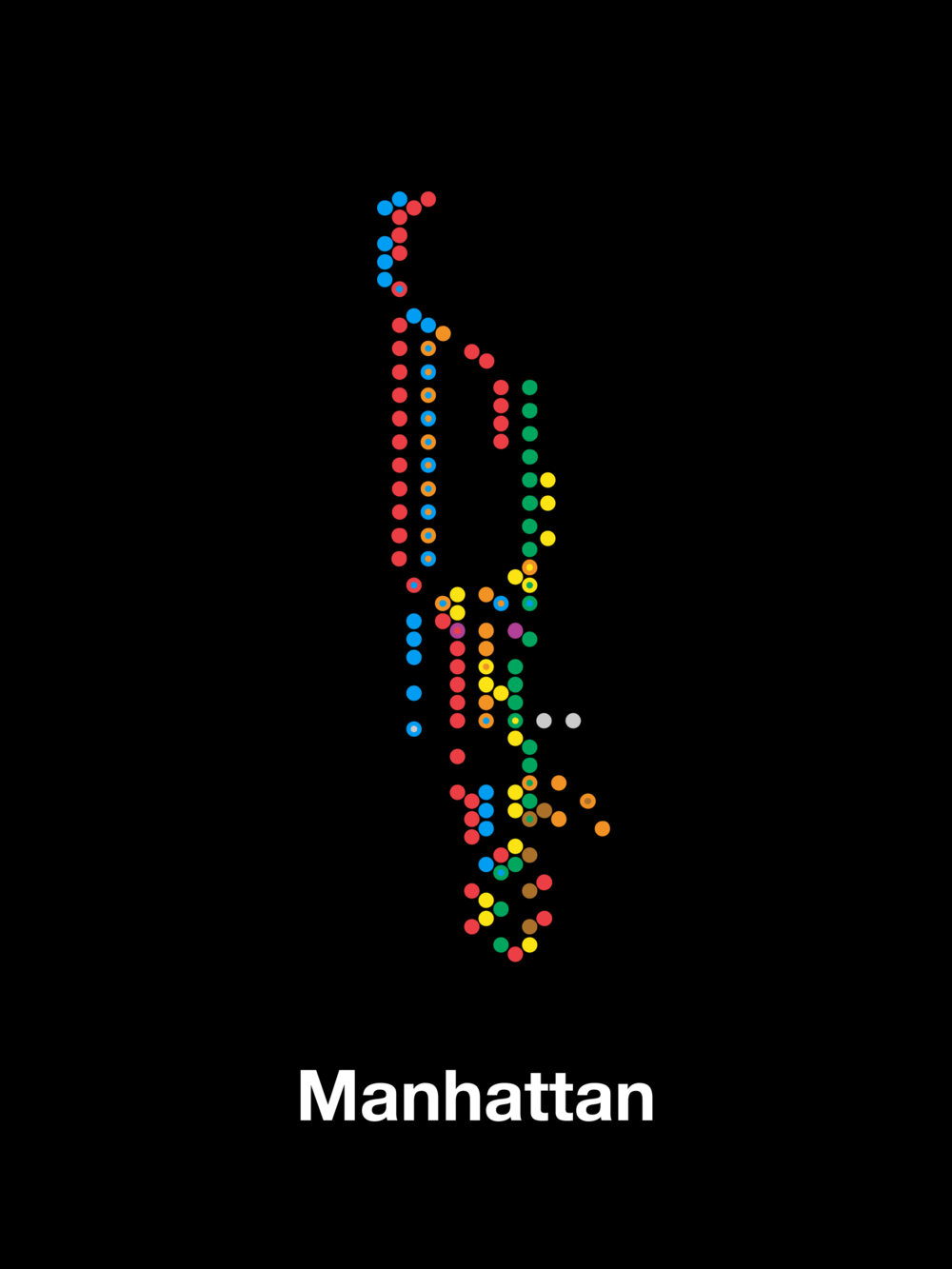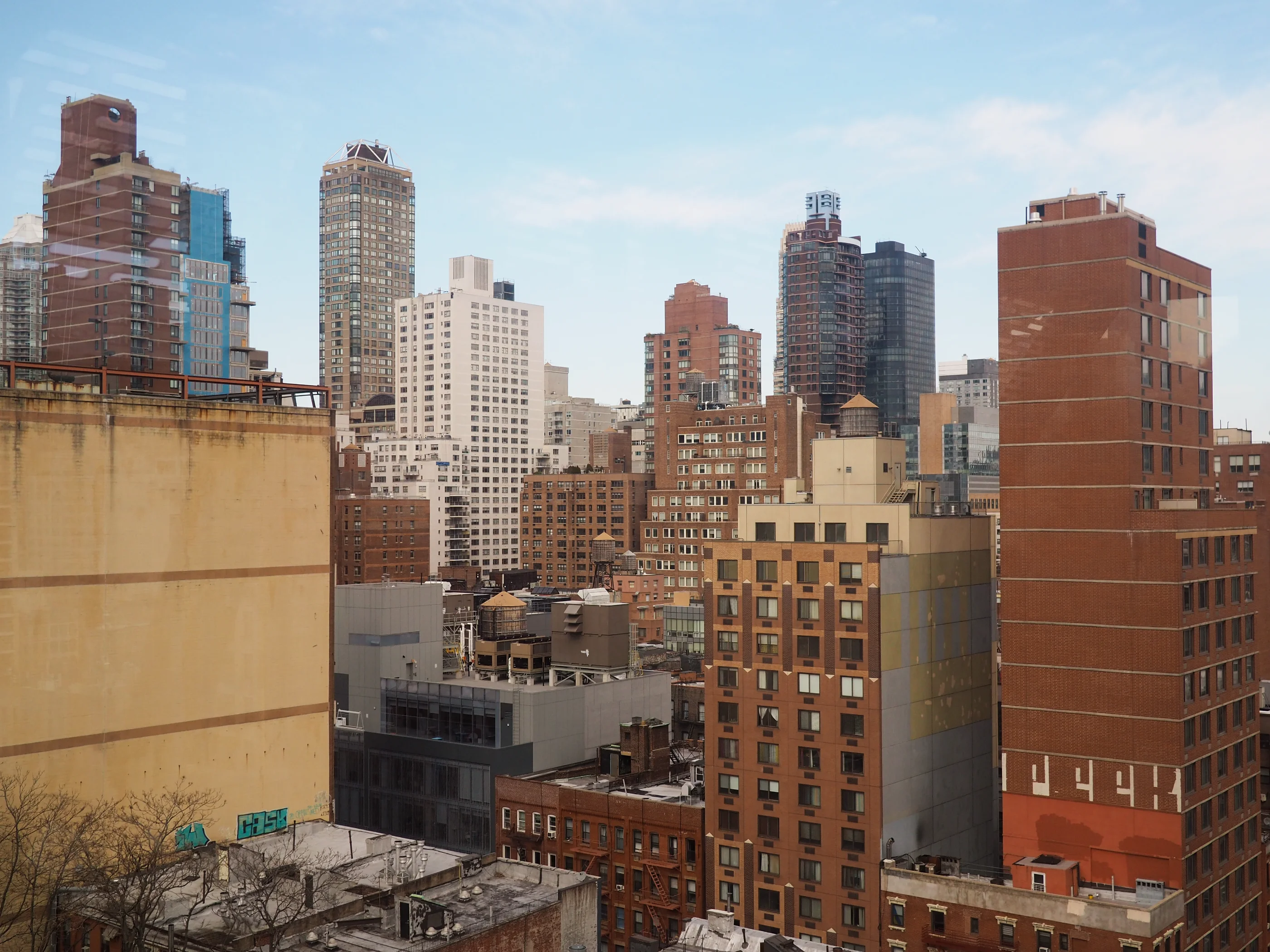— Interview with Shaina Anand and Ashok Sukumaran, founders of Bombay artist group CAMP, about their current show at MOMA. I saw their work Bombay Tilts Down last year at RMIT in Melbourne and I can highly recommend. Go see the show if you’re New York in the next couple of months.
Posts about New York (RSS, JSON)

A crowd-sourced map by The New York Times shows the boundaries of New York neighbourhoods. Delineating neighbourhoods in urban areas is notoriously difficult because every resident has a different idea where their neighbourhood starts and ends. This map does a great job of showing distinct areas while also showing fuzzy transitions between them.
— A New York steak house, which only existed as a Google listing, finally opened for one night. The story reminds me of a fake restaurant that managed to become the number 1 rated place on Trip Advisor in London and that served £1 microwaved food on the only night it was open. (via)
— NSKYC: The average colour of New York’s sky, conveniently provided in HEX, updated every five minutes. (via)
— Where can you get within 40 minutes from every subway station in New York? Chris Whong’s fun, interactive map shows you, using GTFS data from New York’s Metropolitan Transportation Authority.

These minimalist graphics and maps from Peter Gorman are awesome.
Hot Air

Have any Republican presidential candidates made a statement yet that this wouldn’t have happened if they were in charge, the Canadians blowing their smoky, poisonous air across the border?
New York

New York is one of the places, big cities usually, where you need to know where to go. You either have good plan or someone to guide you around. If not, you naturally end up where everyone goes: The shopping districts that look the same everywhere, whether you’re in North America, Europe or Australia. The tourist traps with its gift shops, overpriced chain restaurants, and selfie opportunities. And the places that are made to look cool and exciting, like markets in industrial settings that sell overpriced street food and trinkets that collect dust at home. When I arrived in New York for a one-day visit, I stumbled around like an absolute tourist and ended up in precisely those places.


Large parts of Manhattan are devoid of any character now. I watched too many movies set in the New York of the 60s and 70s, and today’s New York—naturally—is very different. It’s now full bland modern buildings that have replaced the architecture I’ve come to know from these movies: Red bricks, art-deco features and fire escapes. Change is inevitable; I’m sure some people didn’t like the Empire State Building when it was completed in 1931, towering over Manhattan and dwarfing everything else.

If you’ve lived in a big city, you build a tolerance for these things; they are part of the city’s ever-changing nature. Still, when I go to New York, I want to feel like I’m in a Woody Allen movie.
— Ben Yakas, writing for the Gothamist, explores the history of the colour scheme in New York’s subway map. It explains why the map doesn’t always use unique colours to designate lines in the Subway network. Granted, New York’s Subway system has more individual lines than London’s Tube network, but I find London’s map easier to use. Unique colours mean I can trace a line on the map to see where it’s going, and wayfinding inside stations is easier, too; I can follow the right colour to find my platform. (via The Map Room)
— A Stroll Down Flatbush Avenue
This set of photos taken approximately every 50 feet along a stretch of Flatbush Avenue in Brooklyn show the bustling street, storefonts, elevated trains, and trolleys.
Like Street View, but the pictures are from 1914.
In a lovely animated short film, five life-long friends recount life in Brooklyn in the 1970s. (via Waxy.org)
— Shaun Ganley recorded the approach to New York’s LaGuardia Airport, arguably the best view over the City. You get to experience the size of New York, how the architecture changes, and how the different parts connect. It’s like a vast, real-life map.
Getting a view of my destination while approaching the airport is one of my favourite things about flying. Approaching London Heathrow, you get an excellent view of the city on most days; if you have a window seat on the right-hand side of the plane and if the weather plays its part.
— A short history of technology hubs in the US. Surprisingly, the article, published only a year ago, is only available from the Internet Archive. The Reboot is now a crypto site.
— “The Map” is a short documentary by Gary Hustwit about the redesign of New York’s subway map and the accompanying online app.
— Public-transport stations worldwide play music to discourage loitering and anti-social behaviour and deter crime inside stations.
At Parliament Station in Melbourne, it might be Fleetwood Mac if you’re lucky, but it’s mindless pop music on most days. They should be playing funk. At Penn Station in New York, it’s classical music; same as at Euston Square Station and 64 other stations in London, and it had an effect on crime rates:
Initially set up in 2007, the initiative proved successful, within 18 months, robberies dropped by 33 percent, assaults on staff were down 25 percent and vandalism by 37 percent.